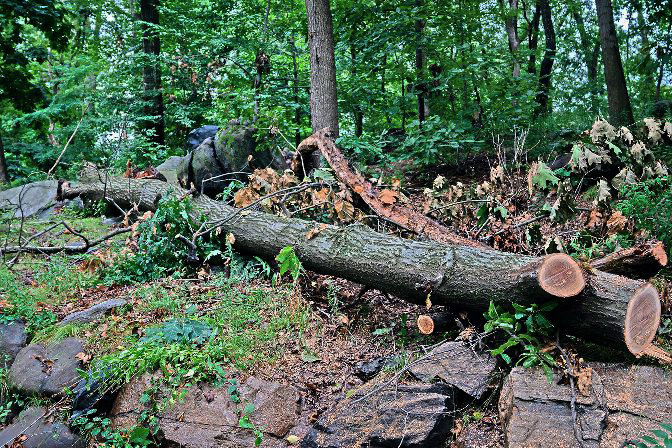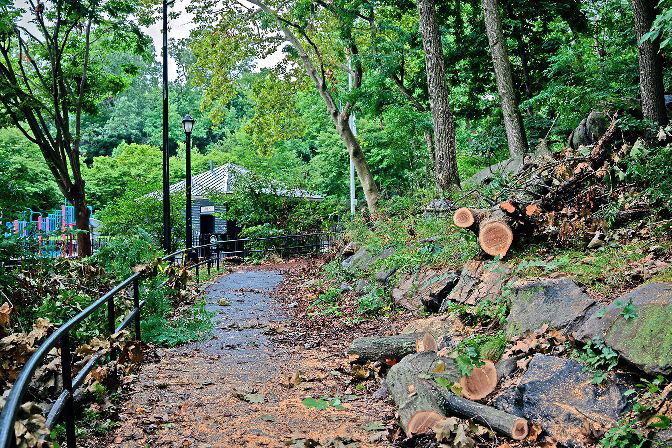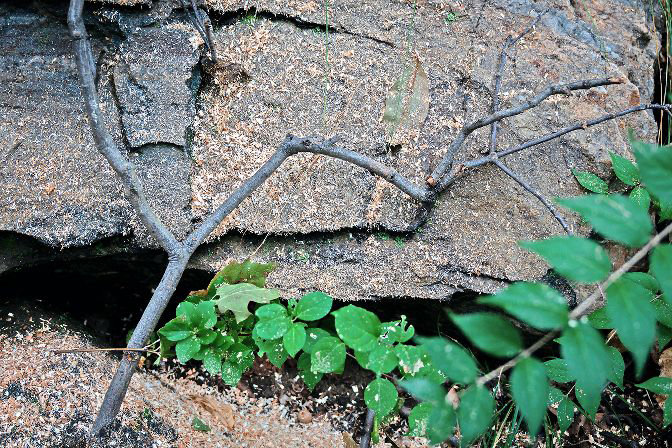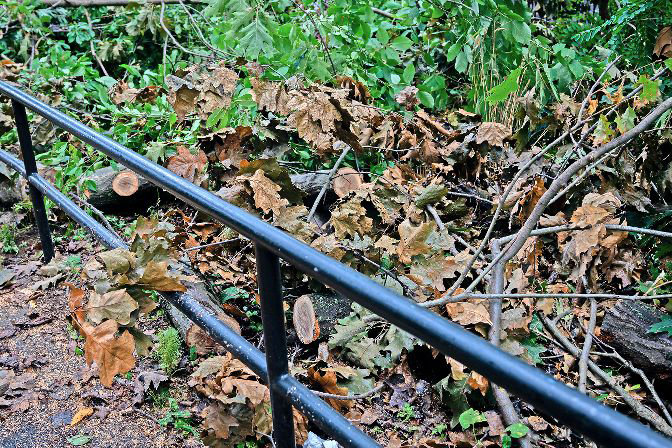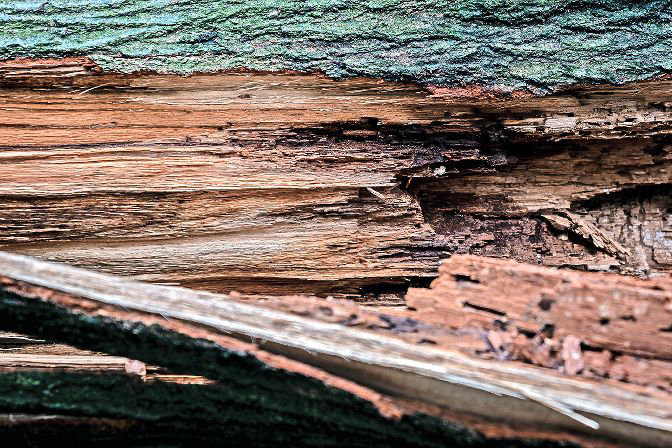Damaged tree finally falls, and park-goers make sound
Bob Mahoney noticed something amiss in Vinmont Veteran Park.
He was walking through the 3.5-acre “pocket park” tucked between Riverdale and Mosholu avenues a couple years ago when he noticed a black cherry tree beginning a slow descent to the ground. It already was leaning into one of its neighbor’s branches.
On closer inspection, Mahoney determined the tree was — at least partially — dead. Some of its bark was missing, and rot had set in.
Concerned that the tree would crash onto the concrete path below, Mahoney reached out to the parks department. Was the tree concerning? Yes. But to parks officials, it was not a huge one. The tree was relatively small, and Vinmont — despite its proximity to P.S. 81 Robert J. Christen — relatively quiet.
But, last week, Mahoney walked into the park only to find that same black cherry tree down across the path.
And he was concerned: The tree — deemed not a threat in 2018 — had now fallen in a park traversed regularly by elementary school children, older community residents, and everyone in between.
Mahoney was happy no one was under the tree when it fell — a fear he expressed back when he first discovered it. Still, even with what ultimately happened with the tree, Mahoney was satisfied with parks’ response, even if he felt the issue wasn’t that easy to dismiss.
“Of course I was concerned that whatever calculus they were using — the tree looked formidable to me — in the event that it was an accident waiting to happen,” Mahoney said.
But parks did come out and inspect the tree twice, department spokesman Dan Kastanis said. The first was when Mahoney reported it in September 2018, and then again the next July. During both inspections, the tree was rated a “C” on a scale ranging from “A” to “D,” where “A” is the worst condition.
“We will complete all work in Category A first,” Kastanis said, and then address other trees when resources are available.
The assessments don’t just take into account the tree’s condition, but also where it’s located and what kind of risk it might pose to the public. A tree in a busier area, or a dead tree with hanging limbs, might be addressed first, Kastanis said, since they have a better chance of potentially hurting someone passing by.
Vinmont’s leaning tree would have been addressed at some point, Kastanis added, although Mother Nature had her own schedule.
One of the contributing factors that may have ultimately brought the Vinmont tree down might have been the arrival of Tropical Storm Isaias last month, which brought down or damaged more than 1,500 trees in the Bronx alone, and more than 6,000 citywide.
At the same time, the parks department isn’t immune to budget cuts that have many city agencies in the wake of the coronavirus pandemic. More than $7 million was cut from the parks department’s tree pruning contracts, with another $1.5 million lost for stump removal.
Even so, parks plans to finishing 55,000 inspections this year, Kastanis said, like the ones carried out in Vinmont.
But, operating on a much-reduced budget after a damaging storm isn’t easy. It had been a few weeks since Mahoney had last been in the park, so he wasn’t exactly sure when the tree fell, but it was likely after the storm. While most of the city has been focused on Con Edison dealing with the largest power outage since Hurricane Sandy, parks was dealing with its third-most damaging storm in 10 years — behind Sandy and tornadoes that blew through Brooklyn and Queens in 2010.
Parks received four months-worth of requests in a matter of just three days, Kastanis said.
“I can’t estimate the size of it, but it’s a big heavy tree that came down,” Mahoney said. “If anybody was there if it snapped down, somebody would have been badly hurt. Or worse.”
Still, Mahoney considers himself a parks department supporter, going so far as to send notes to managers when he notices their employees are doing particularly good work. And often, those working to maintain Vinmont are, he said.
They keep everything in good shape.
But then again, Mahoney wonders if the methods parks use to analyze which trees need to be taken care of should be re-evaluated. Just last May, a massive tree branch fell in the Upper West Side’s Riverside Park, injuring four people.
“Is there an algorithm? Is there criteria? How do they measure rot that’s going on in a tree like that?” Mahoney asked. “Do they spend more time and resources making the measurement, and then have this happen? Whereas, what is it, half a day, to take a dead tree down?”
The parks department uses trained forestry crews to take stock of and trim or cut down damaged trees — not, usually, the regular maintenance crews who move through the city’s small parks, according to Kastanis. Vinmont and other nearby parks, like Henry Hudson and Seton parks, don’t have dedicated staffers like larger Bronx staples, Van Cortlandt Park.
“As they go through this cost-benefit analysis, a single pedestrian — it could be an adult in a baby carriage” who could be hurt by a falling tree, Mahoney said. “Please don’t put a price on it. That park gets continuous use. There are crowds there all the time.”

